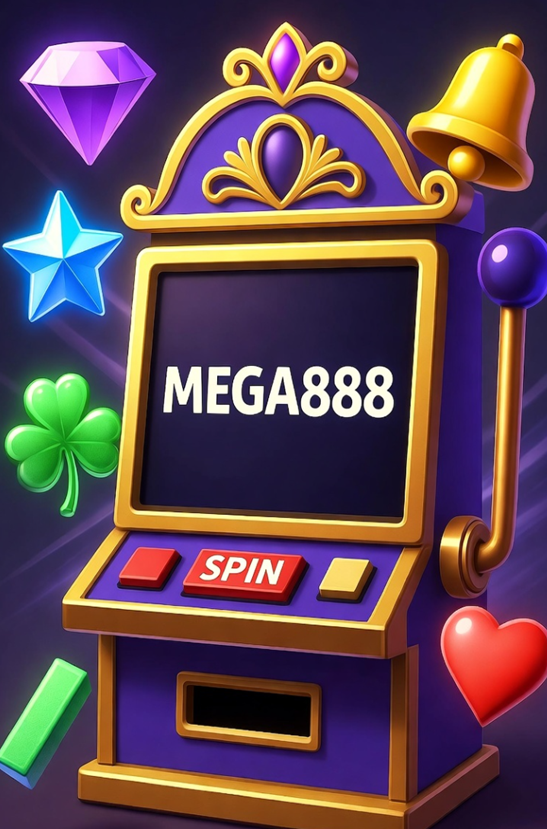All
Best Ten Players For The Punjab Kings

Since the start of the Indian Premier League, the Punjab Kings had been on a ride that was probably best described as a roller coaster. This group used to be known by its old name, which was the Kings XI Punjab. The name of the team was officially changed to the Punjab Kings on February 17, 2021. This team has not been able to win the IPL championship for the first time since then. Even though this franchise has changed a lot in the past few years, it hasn’t left a lasting impression. Even so, the legend of the player has won the hearts of Punjabi fans of this series. During their careers, many athletes have made an indelible mark on the hearts of their fans and this is backed by insights from ipl flash news:
- KL Rahul –
KL Rahul, who is from India, is a great cricket player. He is the team’s leadoff batter, and he signed a contract with the team in 2018. During his time with the Punjab Kings, he was also the captain of the team. In 2020 and 202, he was the captain of the team. Because of what he did, the team won a lot of games on its own. He got the Orange hat for the first time in 2020 because he had the most runs in a season, but he did not make the team. KL Rahul is the captain of the Lucknow supergiants team, which he is a part of right now. Between the years of 2018 and 2021, he played in 55 games and helped the team score 2548 runs (2 hundred, 23 half-hundreds).
- Shaun Marsh –
Shaun Marsh is an Australian cricket player who is thought to be one of the best in the world. He became a member of the KXIP in 2008 and stayed there until 2017. (Punjab Kings). He can now stop working in the media after a long and successful career there. During the time he played in the IPL, he had a few knocks that helped his team win games. During his time in the IPL, he played in 71 games and got a total of 2477 runs. With 20 half-centuries and one full century, this gives a mean of 39.95 for the whole group.
- David Miller –
Most people agree that David Miller is one of the players with the most power. He would often bat in the last few overs, and most people think he is one of the best players in the game. People started calling him “killer Miller” because of how much damage he did with his hits in the last few overs of a cricket tournament. From 2012 to 2019, he was one of the most famous batters in the history of the team. Overall, he played in 84 games and drove in 1974 runs by the end of the season. As of right now, he has nothing to do with the team anymore because Punjab Kings cut all ties with him after the 2019 season. Instead, he is playing for the Gujarat Titans right now.
- Mayank Aggarwal –
Mayank Aggarwal is the first batter for the team, so he can get things off to a good start. In the past, when the bases were full, he had a high success rate, as shown by the fact that he could consistently hit the ball over the fences. Because the kings of Punjab depended on Mayank, they would not let him be sold in the huge sales. He has been on the team since the beginning of 2018. In the year 2022, he was named captain of the Punjab Kings. The work he put into this business has paid off.
- Glenn Maxwell –
Glenn Maxwell is an all-rounder who plays cricket for Australia. He can play in many different positions. During the 2014 season of the Indian Premier League, when he played for this team, he quickly became well-known. He is known for his amazing hitting in the “death overs,” which is where many of his team’s most memorable hits came from. After 1383 at-bats in 70 games, he struck out 157.69 times for every time he walked. Because of his poor performance over a long period, the rulers of Punjab let him go. Maxwell just recently started playing for the Bangalore Royal Challengers.
- Chris Gayle –
Chris Gayle is a cricket player from Jamaica who is known as the “global boss” because of how well he does on the field. Since RCB kicked him off the team in 2018, his IPL career has been nothing but a roller coaster. In the first half of the auction, no team wanted to buy his services buy Punjab kings picked him up and he returned the favor by delivering some amazing performances.
- Wriddhiman Saha –
Wriddhiman Saha is a great wicketkeeper and batter from India. He was needed for the business to run, so he couldn’t be replaced. He hit a century in the last game of the 2014 Indian Premier League, but his team lost to the Kolkata Knight Riders. Throughout 62 games, he helped the team score 1190 runs, including 105 in the 50s.
- Piyush Chawla –
India’s Piyush Chawla is a leg spinner with a lot of experience and a lot of skill. He was a bowler who was known for both how hard he hit the ball and how well he used it. From 2008 to 2013, he was with the Punjab Kings. During that time, he played in 87 games and took 84 wickets. He also took 84 wickets during that time.
- Liam Livingston –
Liam Livingston is an English all-rounder cricketer who is known for being a deadly batsman no matter what the weather is. He was just bought by the Punjab Kings at a big auction, and since then, he has surpassed all of the team’s hopes for him. He played 14 times for the club the year before and scored 437 runs in the last few overs. His amazing strike rate of 182.04 was made up of four half-centuries.
- Shikhar Dhawan –
Shikhar Dhawan is a well-known cricket player in India. He is known as “Gabbar,” which is a nickname for his first name. At the most recent mega auctions, the rulers of Punjab were the first to bid, and they won the bid. In the years to come, there is no doubt that he will become a great player for the Punjab Kings. He has a lot of experience, and he also has a lot of potentials.
Know all about cricket news and updates at CBTF news.
Get the fastest cricket news update at https://cbtfspeednews.com/.
Know all about cricket betting and updates at CBTF betting.
Get the updated expert betting tips at https://cricketbettingtipsfree.com/
Checkout our videos to get the latest updates about cricket and betting tips, and casino
tips to win big with expert opinions at https://www.cbtfmytube.com/.
All
Mega888 Malaysia: The Psychology Behind Winning and Responsible Play

In Malaysia’s fast-growing world of mobile gaming, Mega888 has become more than just a popular app — it’s a lifestyle choice. Thousands of players open it daily for excitement, challenge, and the chance to win. But what keeps them coming back? And how do smart players balance the thrill of gaming with responsibility?
Understanding the psychology behind gaming can help players not only enjoy the experience but also make better, more mindful decisions. Let’s explore how Mega888 creates motivation, rewards discipline, and encourages sustainable play for Malaysian users.
The Emotional Rush of Every Spin
Humans are wired to enjoy anticipation. Every spin, every card flip, every sound effect triggers a release of dopamine — the brain’s natural “feel-good” chemical. This small burst of excitement is what makes games so satisfying.
Apps like Mega888 design their experiences to amplify this feeling. Smooth visuals, catchy sound design, and instant feedback all combine to create what psychologists call a “flow state” — when players are fully engaged, losing track of time because they’re focused and having fun.
But true gaming mastery means knowing how to control that feeling instead of being controlled by it. Recognizing that the thrill is part of the experience — not the entire goal — is what separates responsible players from impulsive ones.
The Power of Rewards and Reinforcement
The structure of mobile gaming relies heavily on reward psychology. Players receive small but consistent wins that keep motivation high. These “micro-rewards” — such as free spins, daily bonuses, or level-ups — provide satisfaction and encourage repeated play.
Mega888 uses this system perfectly. Each game offers a mix of small wins and big jackpots, keeping players excited without overwhelming them. However, the platform also integrates responsible features like spending limits and reminder alerts, helping users stay in control.
The best part? Every win feels earned. The balance between luck and effort makes players feel accomplished — which is the secret to long-term enjoyment.
Why Safe Environments Improve Player Focus
One of the reasons players trust Mega888 is its commitment to a safe and transparent environment. When users know their data, deposits, and gameplay are secure, they can focus on the fun — not the risks.
Sites like livemobile55 enhance this trust by offering verified access to official downloads and updates. This eliminates the danger of fake apps or cloned versions, which often carry malware or scams.
According to Wikipedia, nearly 40% of online gaming losses globally come from users engaging with unverified platforms. In contrast, verified channels create a sense of reliability and reduce anxiety — key factors that allow players to enjoy the game with a clear mind.
The Importance of Responsible Gaming
Responsible gaming isn’t about limiting fun; it’s about ensuring that entertainment never turns into stress. Mega888 and its verified partners actively promote this principle through:
Deposit and time control features to help players manage habits.
Transparent win/loss tracking that encourages awareness.
Instant access to help and support if users ever need guidance.
When players treat gaming as entertainment — not an income source — they play smarter. They take breaks, manage expectations, and enjoy the experience for what it truly is: digital relaxation.
In fact, studies show that players who self-regulate tend to perform better over time because they make more rational decisions, free from emotional impulse.
How Mega888 Keeps Players Engaged — Without Overload
Too much information or pressure can make gaming stressful. That’s why Mega888 focuses on clarity and simplicity. Each game’s interface is designed for quick understanding, easy navigation, and instant feedback.
The platform’s fair play system, powered by Random Number Generator (RNG) technology, guarantees that outcomes are purely based on chance. This fairness builds long-term trust — players know every spin or card draw is random and transparent.
By removing any feeling of manipulation, Mega888 allows players to relax and enjoy the excitement without second-guessing results.
Mindset Tips for Smarter Gaming
To enjoy Mega888 responsibly and maximize satisfaction, players can adopt a few psychological habits:
Set Intentions Before You Play
Decide whether you’re playing for fun, practice, or rewards. Clear goals prevent emotional decisions.
Take Scheduled Breaks
Regular pauses help reset your focus and maintain a healthy balance between excitement and control.
Celebrate Small Wins
Acknowledge minor victories. They’re proof that patience and persistence pay off.
Track Your Spending and Time
Use built-in features or apps to monitor activity. Awareness leads to smarter gaming.
Use Verified Platforms Only
Always access through trusted sources like livemobile55 for safety and authenticity.
Responsible gaming doesn’t limit your enjoyment — it enhances it by ensuring every experience is positive and pressure-free.
How Malaysia Is Redefining the Gaming Culture
Malaysia’s new generation of gamers understands that entertainment should be enjoyable, safe, and sustainable. Apps like Mega888 have played a major role in shaping this mindset.
Unlike traditional gambling environments, modern mobile gaming platforms promote transparency, customer support, and community engagement. This evolution has transformed what used to be a solitary pastime into a thriving online culture of connection and responsibility.
The Malaysian market is also unique in how it blends technology with social experiences — players share game highlights, compete in small tournaments, and celebrate wins together. This positive social interaction helps gaming feel healthier and more human.
The Future of Smart Gaming in Malaysia
Looking ahead, mobile gaming in Malaysia is set to evolve even further. Artificial intelligence and data analytics will soon personalize gaming experiences, providing players with customized recommendations, time tracking, and adaptive limits to encourage smarter play.
Mega888 is already implementing features that allow players to monitor patterns, identify risky behavior, and manage their activities in real time. This balance of technology and responsibility is shaping a safer future for all players.
As gaming becomes part of everyday life, platforms like livemobile55 will remain the go-to destination for Malaysians who value trust, quality, and peace of mind.
Final Thoughts
Winning in mobile gaming isn’t only about hitting jackpots — it’s about mastering your mindset. Mega888 has proven that it’s possible to combine fun, fairness, and responsibility in one platform.
By playing smart, using verified channels, and understanding your own gaming behavior, you can make every session enjoyable, safe, and sustainable.
For Malaysians seeking the perfect blend of excitement and balance, https://livemobile55.com/ remains the trusted gateway to the official Mega888 experience — where entertainment meets awareness, and every spin tells a story.
All
Dr. Salih Onur Basat — Refined Harmony with rhinoplasty in turkey

A well-proportioned nose can change how the entire face is perceived. In Istanbul, Dr. Salih Onur Basat offers a thoughtfully individualized approach to rhinoplasty in turkey that prioritizes structural integrity and subtlety. Rather than chasing trends, consultations focus on balance: the bridge in relation to the forehead, the tip in relation to the upper lip, and the angle with the chin. This holistic view aims to preserve your unique character while refining features that draw unwanted attention.
Assessment begins with a careful review of your nasal anatomy and breathing function. Many candidates pursue aesthetic changes and functional improvement at once, especially if they have a history of nasal obstruction or a deviated septum. During your exam, you’ll discuss cartilage quality, skin thickness, and the realistic adjustments available to the dorsum and tip. Dr. Basat outlines each step clearly so you understand not only “what” will change, but “why” those changes support lasting harmony.
Recovery from rhinoplasty is measured and purposeful. You’ll receive instructions on sleeping position, cold compress use, and activity restrictions designed to minimize swelling and protect the nasal framework. While early improvements are visible after splint removal, refinement continues for months—especially in thicker-skinned patients. Regular follow-ups help track progress and address questions as your nose settles.
Technique selection depends on your anatomy and goals. Some cases benefit from an open approach for precise tip work; others can be refined with a closed technique. If functional concerns are present, septoplasty can be combined to improve airflow. The goal is a durable shape that looks like it belongs to your face—at rest, in motion, and across different lighting conditions.
International patients value Istanbul’s accessibility, clinical infrastructure, and attentive aftercare. With Dr. Salih Onur Basat, you can expect transparent communication about candidacy, likely outcomes, and timelines that support travel plans. By aligning aesthetics with function, rhinoplasty in turkey becomes a balanced pathway to confidence—respecting your individuality while optimizing facial proportions.
All
Do Australians Pay Tax on Gambling Winnings? Here’s What Every Winner Should Know

At HarborPoint Tax Advisors, based in Sydney’s Inner West, one of the most common questions we hear is: “Do I have to pay tax on gambling winnings in Australia?”
From Powerball tickets and horse racing bets to pokies, raffles, and online casino spins, Australians love the thrill of a wager. With the rise of digital platforms such as RocketPlay, players can now enjoy licensed online pokies, progressive jackpots, and live dealer games directly from their mobile devices. But with more people playing online, the question about taxation has never been more relevant — what happens when fortune finally smiles on you?
Are Gambling Winnings Taxed in Australia?
The short answer: usually not. In Australia, most gambling wins are tax-free, including:
- Lotto and Powerball jackpots
- Sports betting and racing payouts
- Casino and poker tournament wins
- Pokies and slot machine prizes
- Raffles and sweepstakes
Under Australian Tax Office (ATO) guidelines, gambling is treated as a game of chance, not a profession. Because of this, winnings are considered winds of luck — not taxable income.
Sounds ideal, doesn’t it? But as with most things tax-related, there are exceptions.
When Gambling Winnings May Be Taxable
The ATO will only tax you if your gambling activity crosses into “business” territory. This typically applies if you’re a professional or full-time gambler.
You might fall into this category if:
- You gamble regularly and strategically
- You maintain spreadsheets or track bets for analysis
- Your betting activity generates consistent profit
- You rely on gambling as your primary source of income
- You use professional tools or data-driven systems
If these traits apply to you, your winnings could be deemed assessable income — meaning they must be declared on your tax return.
Real Example: When the ATO Stepped In
A few years ago, a Melbourne punter made headlines after failing to declare more than $180,000 in greyhound racing winnings. He placed hundreds of bets each week, managed a detailed betting ledger, and used odds-tracking software.
The ATO ruled he was operating a gambling business, not just playing for fun — and required him to pay tax on several years of winnings.
The takeaway? Intent and consistency matter far more than luck.
Declaring Gambling Winnings: The General Rule
Here’s a quick overview of when gambling income may or may not be taxable:
| Type of Gambler | Tax Implications |
|---|---|
| Casual Player (e.g. Lotto ticket, occasional betting) | No tax on winnings |
| Professional Gambler (full-time or data-driven betting) | Must declare as assessable income |
| Crypto or Offshore Gambling | May trigger foreign income or capital gains tax rules |
Not sure which category you fall under? A licensed tax advisor can help assess your situation before the ATO does.
Can You Deduct Gambling Losses?
This question comes up just as often: “If I lose, can I claim it on my tax return?”
For everyday punters, the answer is no. Gambling losses aren’t deductible — even if you lose regularly. That weekend punt on the footy match? Gone for good.
However, professional gamblers may be able to offset losses against winnings as part of business expenses, provided their activity is recognised as a commercial operation.
Tips for Staying Compliant with the ATO
Whether you play occasionally or often, these best practices help keep your finances clean:
- Keep a simple log of your wins and losses for clarity
- Define your purpose — is it entertainment or income?
- Avoid excessive betting frequency that looks systematic
- Seek professional tax advice before winnings grow significant
Why HarborPoint Tax Advisors Care
At HarborPoint Tax Advisors, we specialise in helping Australians understand complex tax rules — from side hustles to jackpot wins. Whether you’re a casual Lotto player or an online betting regular, knowing your obligations early prevents headaches later.
We help clients determine:
- Do you need to declare gambling winnings?
- Could you be classified as a professional bettor?
- Is your betting income at risk of ATO review?
In the world of taxation, the biggest gamble is not asking for help.
Final Word: Enjoy the Win, Stay Smart About Tax
To recap:
- Most gambling wins are completely tax-free in Australia
- Professional gamblers may still have tax obligations
- Keeping records helps protect you if audited
So next time you hit that jackpot or cash in a big win, ask yourself — “Do I need to pay tax on this?” If you’re unsure, it’s best to check before the ATO comes knocking. And remember — smart players don’t just bet wisely; they plan their taxes too.
Many reputable online casinos, like FairGo, operate transparently under Australian guidelines, promoting responsible gaming and secure payouts. Whether you’re playing for fun or chasing that once-in-a-lifetime win, understanding the tax side of gambling helps keep both your wallet and conscience clear.
-

 Health1 week ago
Health1 week agoThe Role Of Preventive Dentistry In Avoiding Complex Procedures
-

 Travel5 days ago
Travel5 days agoeSIM Revolution: Staying Connected Across Middle East and Asia Without Breaking the Bank
-

 Health5 days ago
Health5 days agoTeaching Kids Good Oral Hygiene With Family Dental Support
-

 Health5 days ago
Health5 days agoHow Pet Dental Care Prevents Systemic Illness
-

 Health5 days ago
Health5 days agoInnovations In Pain Management Protocols At Small Animal Veterinary Hospitals
-

 Health5 days ago
Health5 days agoHow General Veterinarians Provide Peace Of Mind For Families
-

 Health4 days ago
Health4 days agoHow CPAs Offer Strategic Guidance To Executives
-
All1 week ago
Mega888 Malaysia: The Psychology Behind Winning and Responsible Play


